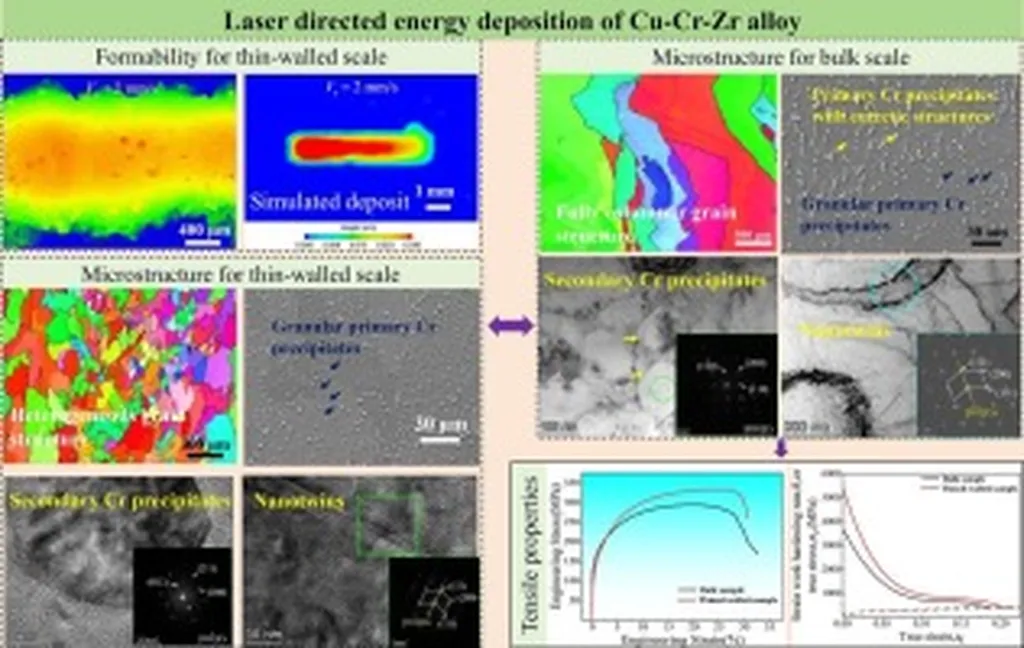In the quest for materials that can withstand the demanding conditions of modern energy infrastructure while efficiently conducting electricity, researchers have made a significant stride. A recent study published in the Archives of Metallurgy and Materials, the English translation of “Archiwum Odlewnictwa,” explores how heat and mechanical treatments can enhance the performance of Cu-Cr-Zr alloys, a critical material in the energy sector.
Led by Yan Peng from the Changchun University of Technology, the research delves into the effects of rolling temperature, recrystallization, and aging treatment on the microstructure and properties of Cu-Cr-Zr alloys. The findings could have substantial commercial implications for industries reliant on high-performance conductive materials.
The study reveals that by subjecting the alloy to cold rolling followed by aging at 450℃ for one hour, researchers achieved an optimal balance of tensile strength (595.9 MPa), elongation (14.35%), hardness (202.60 HV), and electrical conductivity (77.1% IACS). This combination of properties is crucial for applications in power generation, transmission, and distribution, where materials must endure mechanical stress while efficiently conducting electricity.
“Precipitates in the alloy play a pivotal role in inhibiting the formation of recrystallized grains, which contributes to the enhancement of tensile strength and hardness,” explains Yan Peng. The research underscores that the improvement in these mechanical properties, along with electrical conductivity, is primarily driven by aging strengthening. Meanwhile, the advancement in elongation is attributed to recrystallization.
The implications of this research are far-reaching. In the energy sector, where efficiency and reliability are paramount, the development of high-strength, high-conductivity materials like Cu-Cr-Zr alloys can lead to more robust and efficient power infrastructure. This could translate into reduced energy losses during transmission, enhanced durability of components, and ultimately, lower operational costs.
Moreover, the study highlights the importance of tailored heat treatments in achieving desired material properties. As Yan Peng notes, “Proper aging treatment is instrumental in obtaining better properties of Cu-Cr-Zr alloy.” This insight could guide manufacturers in optimizing their production processes to meet specific performance requirements.
Looking ahead, the research paves the way for further exploration into the potential of Cu-Cr-Zr alloys and similar materials. As the energy sector continues to evolve, with increasing demands for efficiency and sustainability, the development of advanced materials will be crucial. The findings from this study not only provide a deeper understanding of the behavior of Cu-Cr-Zr alloys but also offer a roadmap for future innovations in material science.
In an industry where every percentage point of efficiency counts, the work of Yan Peng and their team represents a significant step forward. As the energy sector strives to meet the challenges of a rapidly changing world, such advancements in material science will be instrumental in shaping the future of power generation and transmission.

